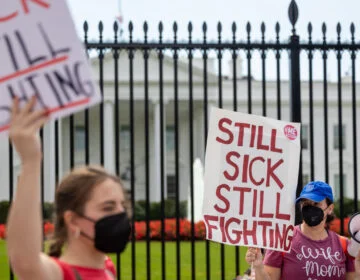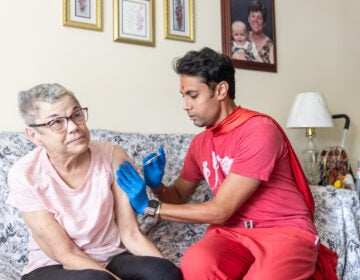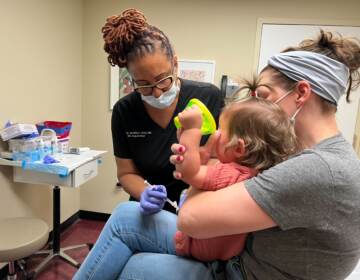COVID cases falling, but trouble signs arise as winter looms
Despite falling case numbers, there are some troubling indicators, including the onset of cold weather, which sends people indoors, where the virus can more easily spread.
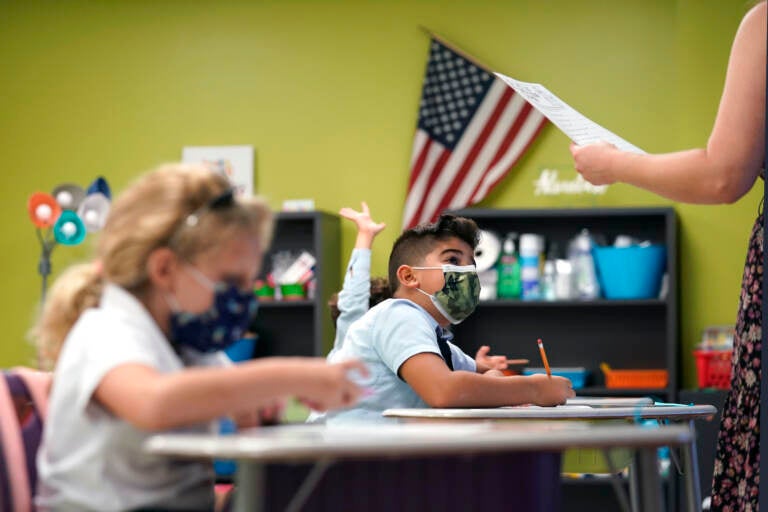
In this Aug. 23, 2021, file photo, a student listens to the teacher's instructions at iPrep Academy on the first day of school in Miami. (AP Photo/Lynne Sladky, File)
Tumbling COVID-19 case counts have some schools around the U.S. considering relaxing their mask rules, but deaths nationally have been ticking up over the past few weeks, some rural hospitals are showing signs of strain, and cold weather is setting in.
The number of new cases nationally has been plummeting since the delta surge peaked in mid-September. The U.S. is averaging about 73,000 new cases per day, dramatically lower than the 173,000 recorded on Sept. 13. And the number of Americans in the hospital with COVID-19 has plummeted by about half to around 47,000 since early September.
In Florida, Miami-Dade County’s mask mandate could be loosened by the end of October if the encouraging numbers continue, and nearby Broward County will discuss relaxing its requirement on Tuesday. The superintendent in metro Atlanta said he will consider waiving mask requirements at individual schools.
A high school outside Boston became the first in Massachusetts to make masks optional after it hit a state vaccination threshold. With about 95% of eligible people at Hopkinton High inoculated, school leaders voted to allow vaccinated students and staff to go maskless for a three-week trial period starting Nov. 1.
Still, there are some troubling indicators, including the onset of cold weather, which sends people indoors, where the virus can more easily spread.
With required mask use reduced in much of the U.S., the University of Washington’s influential COVID-19 forecasting model is predicting increasing infections and hospitalizations in November.
Also, COVID-19 deaths per day have begun to creep back up again after a decline that started in late September. Deaths are running at about 1,700 per day, up from close to 1,500 two weeks ago.
The virus is still striking unvaccinated communities, many of them rural areas in states including North Dakota, Wyoming, Alaska and Minnesota. More than 67% of the nation’s eligible population is fully vaccinated, and the Biden administration is getting closer to enacting a workplace vaccine mandate for every business in the country with more than 100 employees.
In Alaska, which has ranked at or near the top in per-capita case rates over the last month, hospitals remain strained, but health care workers are not speaking out the way they had, said Jared Kosin, president and CEO of the Alaska State Hospital and Nursing Home Association. A recent debate over masks in Alaska’s largest city, Anchorage, grew heated, and hospital and public health officials last month reported hostilities toward health care workers related to COVID-19.
It’s not yet clear, he said, if the state has peaked in terms of cases in this latest surge.
“It’s not letting up and I think that’s the hardest part with this. It’s not like you can see hope on the horizon, you know we’re going to see a rapid decline and get through it. it just seems to come and go and when it comes it hits really hard.”
In sparsely populated Wyoming, which has one of the nation’s lowest vaccination rates, hospitals are coping with more patients than at any other point in the pandemic. The vast majority of hospitalized patients in Wyoming haven’t gotten the vaccine, the state’s vaccination rate is only about 43%. Only West Virginia ranks lower.
“It’s like a war zone,” public health officer Dr. Mark Dowell told a county health board about the situation at Wyoming Medical Center, the Casper Star Tribune reported. “The ICU is overrun.”
In smaller hospitals in North Dakota, many people are getting long-delayed treatments for other ailments, but combined with COVID patients, facilities are pushed to the limit, said Dan Olson, executive director of a network that includes many of those facilities.
“You can talk in the morning and they have beds and by afternoon they might be at capacity,” Olson said.
In rural Minnesota, a man waited two days for an intensive care bed and later died. Bob Cameron, 87, had gone to his hometown hospital in Hallock with severe gastrointestinal bleeding and COVID-19. Officials searched for space in a larger center.
The bleeding exhausted the hospital’s blood supply, and state troopers drove 130 miles (209 kilometers) with new units, but his condition worsened after surgery and he died Oct. 13, the Minneapolis Star Tribune reported.
“We can’t say for certain, of course, that if he got to an ICU bed sooner that he would have survived, but we just feel in our hearts that he would have,” said Cameron’s granddaughter, Janna Curry.
During a three-week stretch this month, rural hospitals in Minnesota were caring for more COVID-19 patients than those in the state’s major urban center, Minneapolis-St. Paul.
__
Associated Press writers Carla Johnson in Washington state, Dave Kolpack in Fargo, North Dakota, and Becky Bohrer in Juneau, Alaska, contributed to this report.
WHYY is your source for fact-based, in-depth journalism and information. As a nonprofit organization, we rely on financial support from readers like you. Please give today.


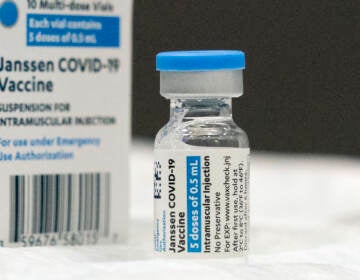

![CoronavirusPandemic_1024x512[1]](https://whyy.org/wp-content/uploads/2020/03/CoronavirusPandemic_1024x5121-300x150.jpg)
